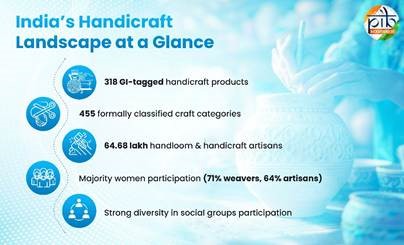Copyright infringement not intended
Picture Courtesy: The Hindu
Context:
Childcare workers form the backbone of India’s early childhood development architecture, yet they remain undervalued, underpaid and inadequately supported, despite the fact that early childhood care has lifelong implications for human development, productivity, and gender equality.
Current Status of childcare workers in India:
- On an average4 million Anganwadi centres serve 23 million children
- By 2030, India will need 6 million centres and 5 million childcare workers
- India’s Time Use Survey 2024 reveals that women’s 426 minutes/day are on unpaid care wheras Men 163 minutes/day. Combined value of unpaid care: 15–17% of India’s GDP (MoSPI)
Why Childcare workers matter?
- They Shape Early Childhood Development (ECD): 90% of brain development occurs before age 6. Childcare workers (Anganwadi Workers, private creche staff, community ECD workers) directly influence cognitive growth (language, problem-solving), socio-emotional skills (trust, empathy, self-regulation), nutrition and health indicators (immunization, growth monitoring), school readiness
Research (UNICEF, Lancet ECD series) shows that investments in ECD yield some of the highest returns of any social policy (up to 13% per annum).
- They Support Working Mothers & Enable Labour Force Participation: Childcare is central to enabling women’s employment. When reliable childcare is available women can take up full-time work which lead to rise in wages due to access to better jobs and ultimately overall household income increases.
Mobile Creches’ programmes at construction sites show that when childcare is available, women’s workdays increase by 2–3 hours which leads to rise in monthly incomes.
- They Reduce the Burden of Unpaid Care Work: India’s Time Use Survey shows that women spend 426 minutes/day on unpaid domestic & care work and men spend 163 minutes/day. This unequal burden limits women’s economic opportunities, reduces girls’ educational and leisure time, reinforces gender inequalities within households, contributes to “time poverty”
- They Provide a Safety Net for the Poorest Children: For children from poor, migrant or vulnerable households, childcare workers ensure daily nutrition, monitor signs of neglect, abuse, or developmental delays, connect families with health and welfare schemes, and become trusted community advocates. They often serve as a bridge between marginalized families and the state.
- They Strengthen Nutrition Outcomes: Malnutrition remains a major challenge (NFHS-5) Stunting: 35%, Wasting: 19%, Only 11% of children receive a minimum acceptable diet
Childcare workers play a frontline role in growth monitoring, supplementary nutrition distribution, health counselling, early detection of anaemia or malnutrition
What are the challenges faced by childcare workers?
- Low wages and economic insecurity: Childcare work is often treated as unskilled “women’s work,” leading to systemic undervaluation. ILO Global Care Report (2022) states that care workers earn 20–40% less than workers with comparable skills.
- Poor working conditions: Many childcare workers work in overcrowded, under-resourced, and unsafe environments. NITI Aayog (2018) audit of ICDS centres found that only 59% had adequate indoor space; just 54% had functional toilets.
- Lack of professional recohnition: Childcare work is not seen as a professional domain needing specialised skills. Case Study: Nordic countries (Sweden, Norway) classify ECD workers as professionals, requiring formal training → leads to high quality ECD and low staff turnover.
- Limited training and skill gaps: Childcare workers often lack formal training in early childhood education, health, nutrition, disability care, or trauma-informed care. The World Bank’s 2021 ECD Quality Report highlights that India’s worker training hours fall below global standards, affecting developmental outcomes.
- Job Insecurity: Most childcare workers are contractual, not permanent staff. They don’t have social security, pensions etc and also lacks of paid leave or medical benefits. A 2023 survey by Oxfam India highlights delayed payments as a common grievance among Anganwadi workers across several states.
Why India must rethink for childcare policy?
- Childcare as a High-Return Public Investment: International evidence from the Scandinavian welfare states, OECD economies, and UNICEF/World Bank ECD studies consistently demonstrates that investments in early childhood care yield substantial long-term economic gains.
Studies by Nobel Laureate James Heckman and OECD researchers estimate that every ₹1 invested in early childhood care yields ₹7–₹10 in long-term returns through higher educational attainment, improved productivity, reduced public spending on health, welfare, and remedial education.
- Childcare as a foundation of human capital: Childhood is where human capabilities are formed. Neuroscience shows that 90% of brain development occurs before age six—a period when synaptic growth, language acquisition, emotional regulation, and cognitive foundations are shaped. High-quality childcare improves:
- school readiness, including literacy and numeracy
- executive functions such as memory and attention
- language development
- curiosity, problem-solving, and creativity
- Social-emotional and health outcomes: Quality childcare also strengthens emotional regulation, empathy, cooperation, and resilience as well as nutritional security (through meals and growth monitoring). A UNICEF 2021 analysis showed that children who attended structured childcare had higher immunization rates and better nutritional outcomes compared to those in informal arrangements.
- Childcare as an enabler of women’s work: Countries that invested in universal childcare France, Sweden, Canada (Quebec model) saw up to 20–40% increase in female labour participation.
What are the government initiatives for childcare in India?
Integrated child development services: This is India’s oldest and largest childcare and early development programme. It operates through community-based centres called anganwadis. These centres provide:
- Early childhood education: Structured play-based learning to support language development, memory, social skills, and foundational cognitive abilities.
- Nutrition and health: Supplementary nutrition, growth monitoring, vaccination linkage, and regular health check-ups.
- Support for pregnant and lactating mothers: Nutrition supplements, counselling on breastfeeding, and guidance on child health and hygiene.
- Community outreach: Home visits by anganwadi workers ensure that children with disabilities, severely undernourished children, and vulnerable households receive special attention.
National nutrition mission: This mission seeks to reduce childhood stunting, underweight conditions, anaemia, and low birth weight. It strengthens childcare by:
- Promoting balanced diets for children and mothers
- Ensuring that nutrition services reach the last mile through digital monitoring
- Encouraging community behaviour-change campaigns on feeding practices
Nutrition improvement directly influences early brain development, emotional regulation, and long-term learning outcomes.
National Education Policy — Early Childhood Care and Education Framework
India’s national education vision places early childhood care and education as the foundational stage of learning. It emphasises:
- Universal Access: Ensuring that every child between three and six years receives early learning opportunities.
- Integration of Anganwadi Centres with Primary Schools: Improving teacher training, play-based pedagogy, and infrastructure.
- Early Learning Standards: Introducing age-appropriate curricula that focus on language, numeracy readiness, socio-emotional skills, and physical development.
National Crèche (PALNA) Scheme
This scheme supports working mothers by providing safe daycare spaces for children aged six months to six years. Crèches offer:
- Full-day care
- Nutrition
- Health monitoring
- Age-appropriate learning and recreation
- Priority support to single mothers, widows, migrant labourers, and low-income households
This initiative plays a crucial role in enabling women’s entry into paid employment.
Pradhan Mantri Matru Vandana Yojana
A direct benefit transfer programme that supports pregnant and lactating women by providing financial assistance for:
- Nutrition
- Rest
- Health check-ups
- Essential childcare needs
This reduces economic stress during pregnancy and promotes healthy early childhood development.
Conclusion:
Childcare workers are not mere service providers—they are nation builders shaping India’s human capital. Recognising their professionalism, ensuring decent wages, and strengthening childcare infrastructure are essential for advancing gender equality, child development, and inclusive growth. A robust care economy is not a social expenditure but a high-return developmental investment.
Source: The Hindu
|
Practice Questions
Q. “Care work is the invisible foundation of human development.” Discuss with reference to India’s childcare workers. (250 words)
|
Frequently Asked Questions (FAQs)
Because they are designated as “voluntary workers”, not formal employees.
90% of brain development happens before age five
Only 10% of Anganwadis operate in urban areas.











